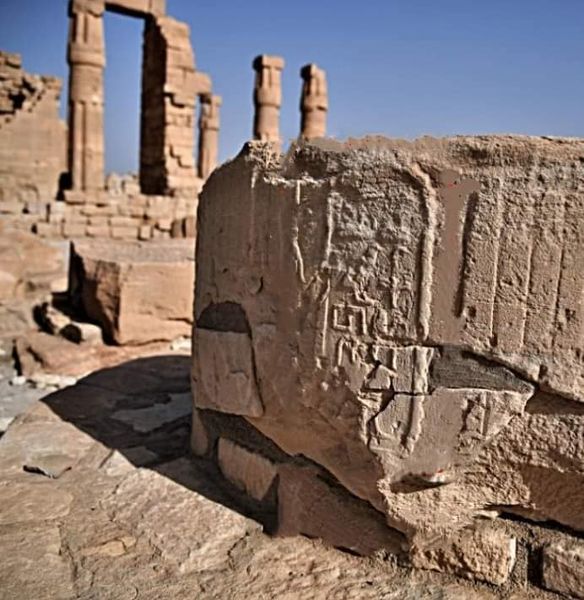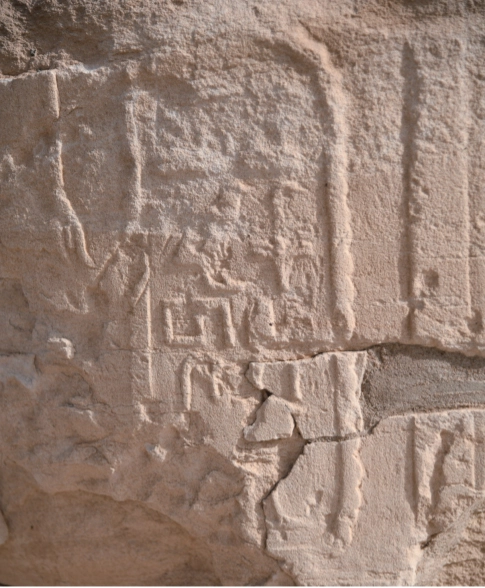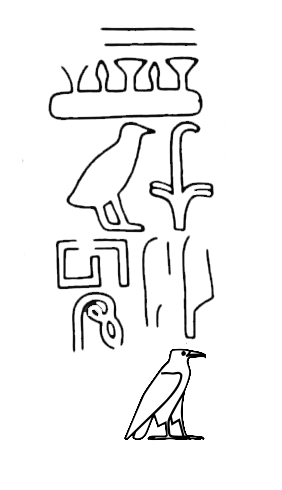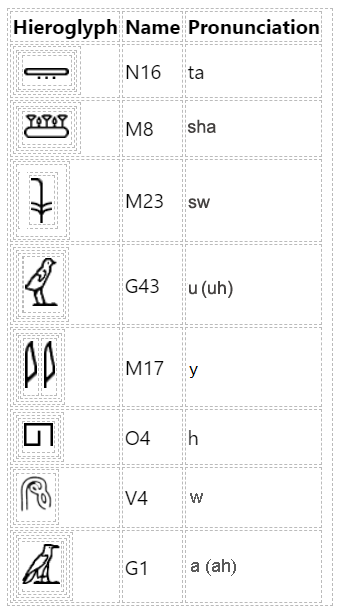Historic Announcement

The Biggest Bible Discovery Ever Made, Archaeology Proves Y’howah Is Not God
The Rise, Decline and Fall of The Roman Religion
The Shaswuh of Y’howah
CIA Submission Reference ID: HWGH4ZEG
CIA Submission Reference ID: C5MC32FU President Biden notified
Many peoples had many gods. Y’howah (YHWH of Shomron) was one of them.
“And Pharaoh said, Who is Yahvah, that I should obey his voice to let Isra’Al go? I know not Yahvah, neither will I let Isra’Al go.” This was the statement by Pharaoh, king of Egypt, when Moses, God’s chosen leader, approached Pharaoh with the command to let the people of Isra’Al leave Egypt to worship God as He had commanded. This exchange is recorded in Exodus 5.1-2
This page proves that The Pharaohs knew the name Y’howah but The Pharaohs had not heard The Name Yahvah (Hebrew יהוה Yahvah) before.
Yahvah is The Only True God.

The Egyptian Pharaoh Amenhotep III built a temple to honor the god Amun-Ra at Soleb in Nubia (modern-day northern Sudan). Within the temple area are a series of columns on which Amenhotep III listed the territories he claimed to have conquered. Each territory is listed by a relief of a prisoner with their hands tied behind their backs over an oval “name ring” identifying the land of the particular foe.
The temple of Soleb, constructed during the reign of Amenhotep III (1378-1348 BC), was dedicated to Amun, but after Akhenaten assumed power, it was rededicated to Aten. An inscription of the official Ramessu dating to the reign of Ramesses III was found there, indicating that the temple continued in use over the next several generations.
The Temple of Soleb is a best-preserved temple in the northern Sudan. It retains its integral parts with regards to size and building material without inappropriate interventions or any significant changes since their abandonment in 1500 BC (Don’t chase after God’s People, you won’t make it home). The core and the buffer zones are well defined, and they are intact and protected.
The timing of The Exodus of The Isra’alites from Egypt, 1513 B.C.E.
All other Meshikhi pages are now historical only and led to these discoveries.
Revelation 1/15/2023 8:38pm Eastern Standard Time
Scripture undergoing fulfillment
Matthew 24.28 Wherever the ruins are, there the vultures will gather.
https://studybible.info/strongs/G4430
Regardless of any amount of research or powerful reasoning, the scripture takes precedence.
The name of Abraham, Hebrew אַבְרָחָמ is pronounced Ab’raham.
Ab – meaning “father”
raham – meaning “compassion” (root word רחם vulture, see final hieroglyph on the home page. It is the Egyptian vulture sign.)
Excavation at Soleb
by Tiffany McTaggart
The hieroglyphs in the cartouche are read from top to bottom and right to left.
The Land of The Shaswuh (Nomads) of Y’howah
Ta Shaswuh Y’howah



G1 Egyptian vulture

Understanding the name Y’howah

Transliterating the two reeds – Middle Egypt /j/
See this link for the other letters
The j sound in English is an example of a palatal consonant, while the y sound in English (akin to the j sound in many other languages) is an example of a palatal approximant.
In the former case (palatal consonant), the tongue is raised and flattened to touch the palate while in the latter case (palatal approximant) it does not touch the palate completely, allowing air to flow between the palate and the tongue.
While the modern Latin script has the letter j, Latin itself did not use j to start with and did not have a well-defined palatal consonant sound. Words like Iapheth, Iesus, Ieremiah, etc. were meant to be pronounced starting with a palatal approximant. In due course, due to natural phonological evolution, they began to be pronounced with a palatal consonant in certain Roman colonies. This gave rise to the need for distinction between the two sounds in writing. The letter j, which was really special cursive form of i became the symbol for this distinct new sound.
The voiced palatal approximant is a type of consonant used in many spoken languages. The symbol in the International Phonetic Alphabet that represents this sound is ⟨j⟩. The equivalent X-SAMPA symbol is j, and in the Americanist phonetic notation it is ⟨y⟩.
https://en.wikipedia.org/wiki/Voiced_palatal_approximant
In other words, when translating to English the letter yodh is a /y/ not a /j/. In Western Culture we say Y’hovah in modern and Y’howah in ancient.
The vital key to avoid confusion is to note that there are not equivalencies between the religious etymologies in the Bible and the hypothetical grammatical etymologies.
Y’howah (Yə-ho’-wah) means “He will prove to be”.
Yah (not Yaw) is the poetic form of The Divine Name
Suffix /yah/ is pronounced ay’ah
Theophoric reference Yeho means “God”
Suffix ‘Al applied to names, not ‘El, Supreme god of The Canaanites.
THE NAME OF GOD YeHoWaH. ITS STORY, by Gérard Gertoux (lifes-purpose.info)

The V4 lasso is definitive proof that the third letter of the Hebrew Tetragrammaton is a /w/ pronounced as a /v/ in modern.

In the excavation report and all other publications following this initial reading, the final sign is classed as G43 quail chick (w), but this was a mistake, and the sign is clearly the G1 Egyptian vulture (a) representing aleph.
Transliterating Ancient Egyptian vulture hieroglyph – the /ah/ sound
Page showing Egyptian Hieroglyph G1 is the Egyptian vulture
Note the difference in head shape between the quail chick and the final character which is Egyptian vulture or aleph. The head of the bird is more rounded while the head shape of the vulture is more angular.
Scripture undergoing fulfillment
Matthew 24.28 Wherever the ruins are, there the vultures will gather.
https://studybible.info/strongs/G4430
Note the blatant omission. The vulture is conspicuously absent as the second letter of God’s Name as would be expected if the first syllable was Yah. Therefore, Yah is the contracted or poetic form of the Divine Name and not the first syllable.
The second letter of God’s Name is neither a short /e/ nor a long /e/.
Further all sex and symbolism in written language is Satanic. There is no problem with the letter /o/ and we are not to make associations.
Discovery made during a routine double check of the original excavation report. October 12-16, 2021.
Our prayers have been answered.
Father in Heaven, Yahvah
We thank you for answering our prayers and confirming Your Name for the world to know. Please bless everyone with this knowledge.
In the Name of Yeshwah,
Ahmeyn
